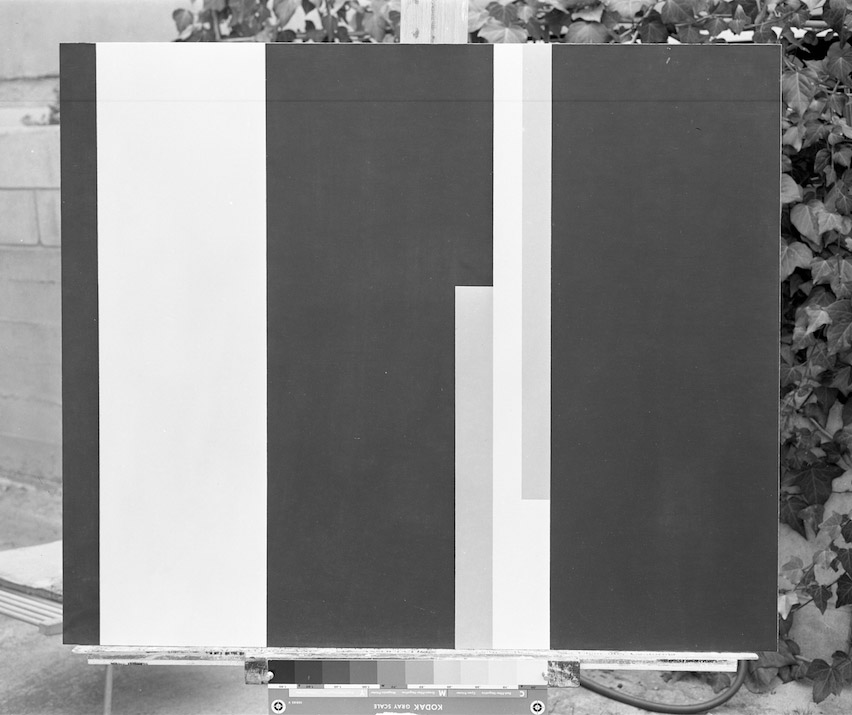—

exhibition Details
Visual History
John McLaughlin’s paintings were captured on film, produced as photographs and reprinted as reproductions. In Frank J Thomas's original photographs, McLaughlin’s works are situated within a domestic garden. Their flatness functions as an obstacle to the three dimensional space that surrounds them: we can’t see more than the sneakers of the anonymous person who stands behind the paintings in a few of the photographs. The minimalism of these paintings intensifies this contrast: they sit in a real space, full of arbitrary details like a bit of hose, a broom, plants that grow one way not another. Yet the paintings are absolute, fully controlled and apparently autonomous.
Still, the border that surrounds them presents a complicated reality, which calls into question all the other print reproductions, that also provide borders but only within very strict conventions. For example, in the context of the print review in The Los Angeles Times, cropped versions of these photographs of the paintings are surrounded by articles and advertisements; in the context of the art catalogues, the photographed paintings are rendered in terms of the printing technology and design conventions of the time. The sheer excess of the real stuff of the garden is matched and possibly exceeded by the excessively controlled presence of the abstract painting. They are radically different, and yet fused together in one form: the print photograph, a photograph no one was supposed to see.
– Fiona Connor, September 2016
- Date
- —
- Curated by
- Fiona Connor
- Location
- Research Library Display Case
- Cost
- Free entry
related archive
Fiona Connor Archive
E H McCormick Research Library Auckland Art Gallery Toi o Tamaki (see archive item details for credit lines specific to each deposit)
RC2013/4
